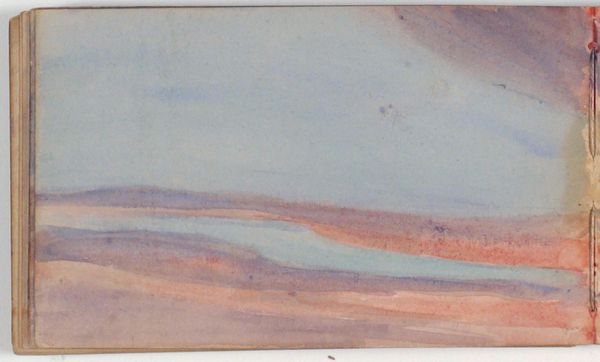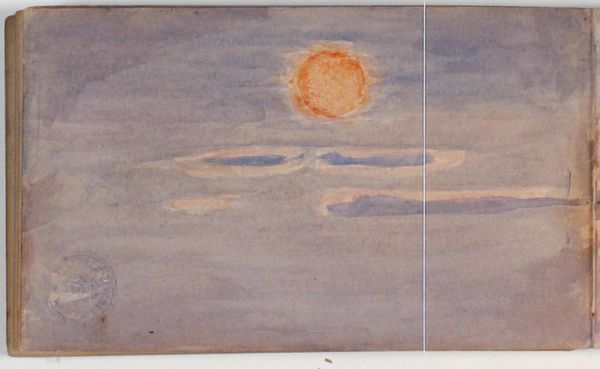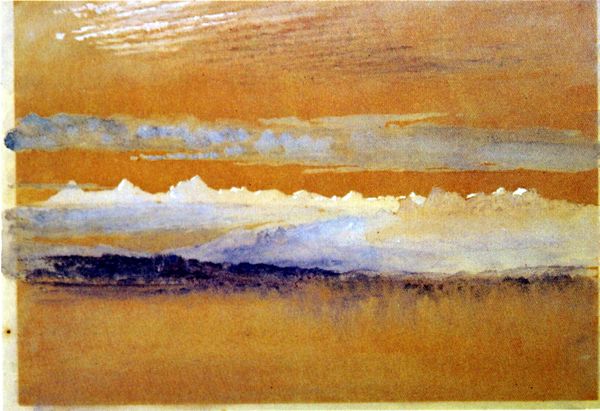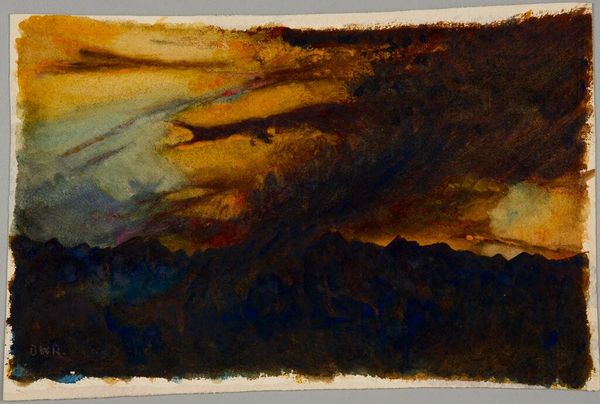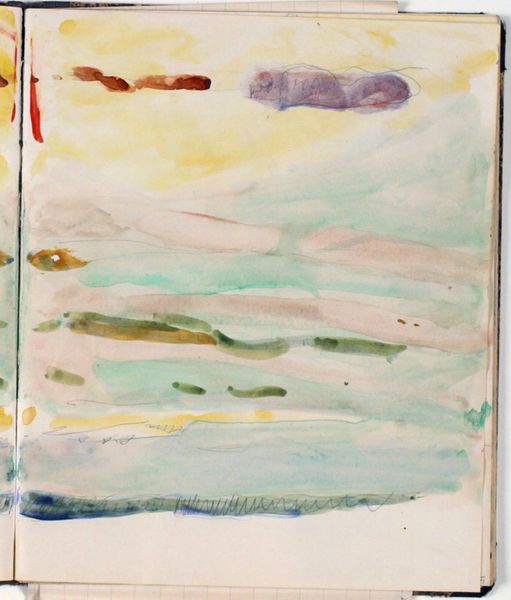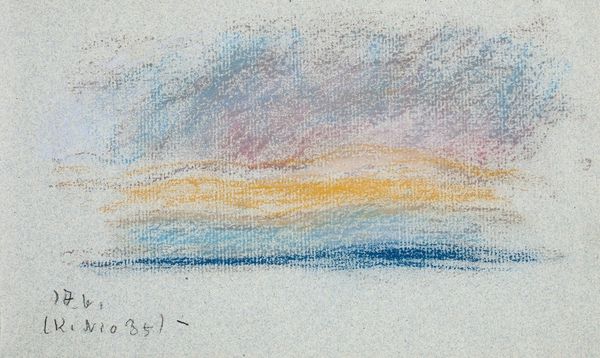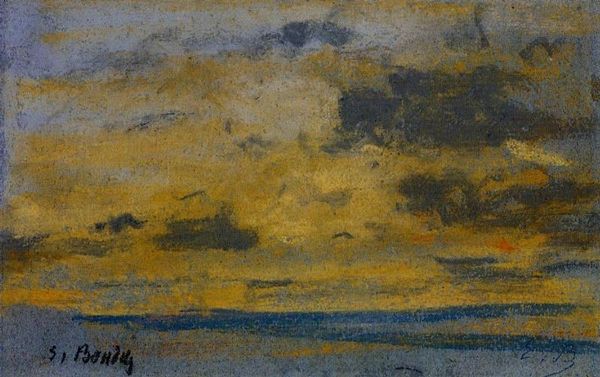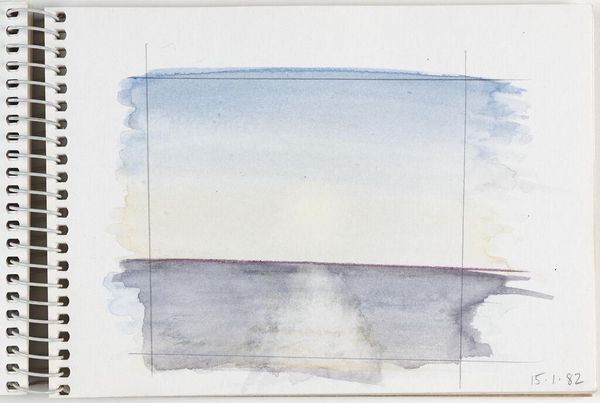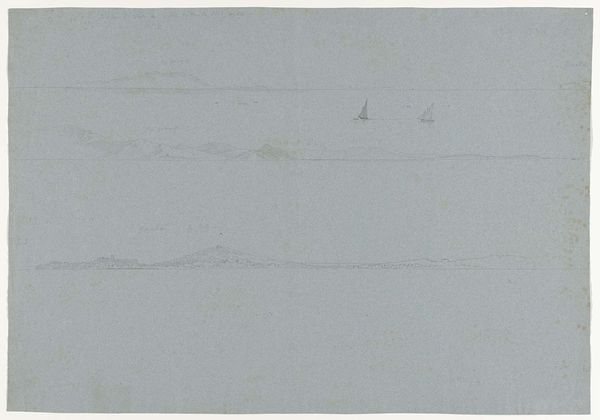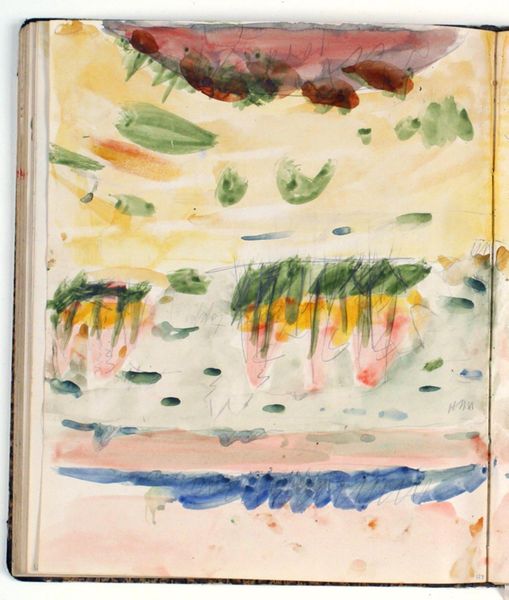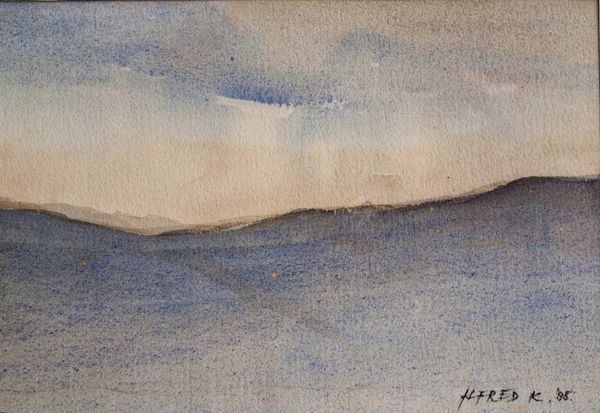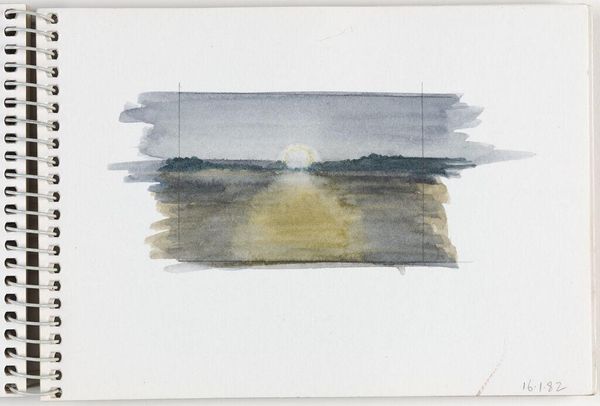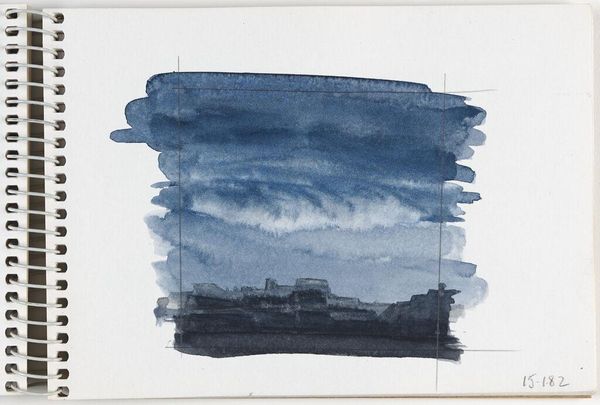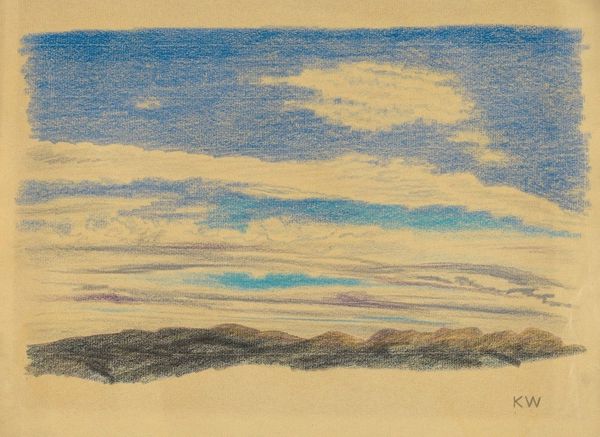
Dimensions: 101 mm (height) x 168 mm (width) (bladmaal)
Curator: Immediately, I'm struck by how raw and unpolished this watercolor appears, as though painted on location directly observing nature. Editor: Yes, this is Niels Larsen Stevns' "Skystudie" from 1896, currently held at the SMK. I think it exemplifies the impressionist movement through his use of watercolour and rapid sketching to capture a fleeting moment in nature. Curator: Note the layers. You can almost feel the transparency of the watercolor interacting with the paper. And how deliberately simple, perhaps even utilitarian, the craft feels. Were such landscape studies produced en masse for artistic training, or did Stevns specifically see this one as 'art'? Editor: Good questions. Considering the institutional framework of art education at the time, artists were encouraged to study nature firsthand. Sketches such as this often served as preliminary studies for larger, more "finished" works that were exhibited and circulated within established art venues. This then, blurs the line between practice and presentation. Curator: Absolutely. There's a deliberate horizontality too. That could refer to an industrial need to capture accurate landscapes – land for railroad use for example, the materiality of place now in relation to rapid expansion and consumption. What stories could the provenance of the paper hold? Editor: I agree. Think, too, how landscape painting became so popular amongst the growing middle class. It offered an accessible connection to nature, increasingly packaged and consumed through art galleries and print reproductions. The imagery connects to leisure and property in complicated ways. Curator: So, it is about availability. Cheap materials, light craft, accessible and reproducable. Yet, here it is framed in a museum space – recontextualized from study to "art" once more. Editor: Precisely! The politics of display within museum walls undeniably elevate its status and assign a different level of cultural significance. It really makes you consider its journey from field to framed object. Curator: Indeed, contemplating both the raw material and cultural mechanisms informs our experience. Editor: Well, let's hope that encourages further appreciation.
Comments
No comments
Be the first to comment and join the conversation on the ultimate creative platform.
